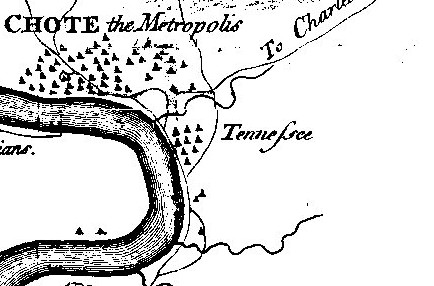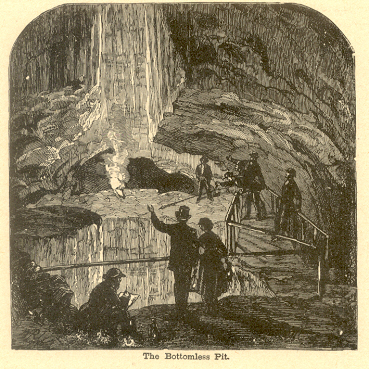|
Orconectes Pellucidus
''Orconectes pellucidus'', the Mammoth Cave crayfish, is a freshwater crayfish native to karst landscapes in Kentucky and Tennessee in the United States. The common name refers to the Mammoth Cave National Park, however it also occurs outside of the park. An alternative common name, the eyeless crayfish refers to its troglomorphic Troglomorphism is the morphological adaptation of an animal to living in the constant darkness of caves, characterised by features such as loss of pigment, reduced eyesight or blindness, and frequently with attenuated bodies or appendages. The ter ... adaptions to its subterranean habitat. References Cambaridae Cave crayfish Freshwater crustaceans of North America Crustaceans described in 1844 {{crayfish-stub ... [...More Info...] [...Related Items...] OR: [Wikipedia] [Google] [Baidu] |
Crayfish
Crayfish are freshwater crustaceans belonging to the infraorder Astacidea, which also contains lobsters. Taxonomically, they are members of the superfamilies Astacoidea and Parastacoidea. They breathe through feather-like gills. Some species are found in brooks and streams, where fresh water is running, while others thrive in swamps, ditches, and paddy fields. Most crayfish cannot tolerate polluted water, although some species, such as '' Procambarus clarkii'', are hardier. Crayfish feed on animals and plants, either living or decomposing, and detritus. The term "crayfish" is applied to saltwater species in some countries. Terminology The name "crayfish" comes from the Old French word ' ( Modern French '). The word has been modified to "crayfish" by association with "fish" ( French language">Modern French '). The word has been modified to "crayfish" by association with "fish" ( American variant "crawfish" is similarly derived. Some kinds of crayfish are known lo ... [...More Info...] [...Related Items...] OR: [Wikipedia] [Google] [Baidu] |
Karst
Karst () is a topography formed from the dissolution of soluble carbonate rocks such as limestone and Dolomite (rock), dolomite. It is characterized by features like poljes above and drainage systems with sinkholes and caves underground. There is some evidence that karst may occur in more weathering-resistant rocks such as quartzite given the right conditions. Subterranean drainage may limit surface water, with few to no rivers or lakes. In regions where the dissolved bedrock is covered (perhaps by debris) or confined by one or more superimposed non-soluble rock strata, distinctive karst features may occur only at subsurface levels and can be totally missing above ground. The study of ''paleokarst'' (buried karst in the stratigraphic column) is important in petroleum geology because as much as 50% of the world's Oil and gas reserves and resource quantification, hydrocarbon reserves are hosted in carbonate rock, and much of this is found in porous karst systems. Etymology ... [...More Info...] [...Related Items...] OR: [Wikipedia] [Google] [Baidu] |
Kentucky
Kentucky (, ), officially the Commonwealth of Kentucky, is a landlocked U.S. state, state in the Southeastern United States, Southeastern region of the United States. It borders Illinois, Indiana, and Ohio to the north, West Virginia to the northeast, Virginia to the east, Tennessee to the south, and Missouri to the west. Its northern border is defined by the Ohio River. Its capital is Frankfort, Kentucky, Frankfort and its List of cities in Kentucky, most populous city is Louisville, Kentucky, Louisville. As of 2024, the state's population was approximately 4.6 million. Previously part of Colony of Virginia, colonial Virginia, Kentucky was admitted into the Union as the fifteenth state on June 1, 1792. It is known as the "Bluegrass State" in reference to Kentucky bluegrass, a species of grass introduced by European settlers which has long supported the state's thoroughbred horse industry. The fertile soil in the central and western parts of the state led to the development ... [...More Info...] [...Related Items...] OR: [Wikipedia] [Google] [Baidu] |
Tennessee
Tennessee (, ), officially the State of Tennessee, is a landlocked U.S. state, state in the Southeastern United States, Southeastern region of the United States. It borders Kentucky to the north, Virginia to the northeast, North Carolina to the east, Georgia (U.S. state), Georgia, Alabama, and Mississippi to the south, Arkansas to the southwest, and Missouri to the northwest. Tennessee is the List of U.S. states and territories by area, 36th-largest by area and the List of U.S. states and territories by population, 15th-most populous of the 50 states. According to the United States Census Bureau, the state's estimated population as of 2024 is 7.22 million. Tennessee is geographically, culturally, and legally divided into three Grand Divisions of Tennessee, Grand Divisions of East Tennessee, East, Middle Tennessee, Middle, and West Tennessee. Nashville, Tennessee, Nashville is the state's capital and largest city, and anchors its largest metropolitan area. Tennessee has dive ... [...More Info...] [...Related Items...] OR: [Wikipedia] [Google] [Baidu] |
Mammoth Cave National Park
Mammoth Cave National Park is a national park of the United States in south-central Kentucky. It encompasses portions of Mammoth Cave, the longest known cave system in the world. The park's are located primarily in Edmonson County, with small areas extending eastward into Hart and Barren counties. The Green River runs through the park, with a tributary called the Nolin River feeding into the Green just inside the park. The cave system has formally been known as the Mammoth–Flint Ridge Cave System since 1972, when a connection was discovered between Mammoth Cave and the even longer system under Flint Ridge to the north. As of 2022, more than of passageways had been surveyed, over 1.5 times longer than the second-longest cave system, Mexico's Sac Actun underwater cave. The park was established as a national park on July 1, 1941, after oft-contentious eminent domain proceedings whose consequences still affect the region. It was named a World Heritage Site on October&nb ... [...More Info...] [...Related Items...] OR: [Wikipedia] [Google] [Baidu] |
Troglomorphic
Troglomorphism is the morphological adaptation of an animal to living in the constant darkness of caves, characterised by features such as loss of pigment, reduced eyesight or blindness, and frequently with attenuated bodies or appendages. The terms troglobitic, stygobitic, stygofauna, troglofauna, and hypogean or hypogeic, are often used for cave-dwelling organisms. Troglomorphism occurs in molluscs, velvet worms, arthropods, fish, amphibians (notably cave salamanders) and reptiles. To date no mammals or birds have been found to live exclusively in caves. Pickerel frogs are classed as either trogloxenes, or possibly troglophiles. The first Troglobiont to be described was ''Leptodirus hochenwartii.'' Morphology of Troglomorphism Troglomorphic species must adapt to unique elements of subterranean life, like continual darkness, reduced season queues, and limited food availability. The reduction of characters like eyes and pigmentation is generally considered to be an evolution ... [...More Info...] [...Related Items...] OR: [Wikipedia] [Google] [Baidu] |
Cambaridae
The Cambaridae are the largest of the four families of freshwater crayfish, with over 400 species. Most of the species in the family are native to the United States east of the Great Divide and Mexico, but fewer range north to Canada, and south to Guatemala and Honduras. Three live on the island of Cuba. The species in the genus '' Cambaroides'' are only found outside North America, as they are restricted to eastern Asia. A few species, including the invasive '' Procambarus clarkii'' and '' Faxonius rusticus'', have been introduced to regions far outside their native range (both in North America and other continents). Conversely, many species have tiny ranges and are seriously threatened; a few are already extinct. A 2006 molecular study suggested that the family Cambaridae may be paraphyletic, with the family Astacidae nested within it, and the status of the genus ''Cambaroides'' remains unclear. The oldest fossils of the family are known from the Late Jurassic Morrison Form ... [...More Info...] [...Related Items...] OR: [Wikipedia] [Google] [Baidu] |
Cave Crayfish
Caves or caverns are natural voids under the Earth's surface. Caves often form by the weathering of rock and often extend deep underground. Exogene caves are smaller openings that extend a relatively short distance underground (such as rock shelters). Caves which extend further underground than the opening is wide are called endogene caves. Speleology is the science of exploration and study of all aspects of caves and the cave environment. Visiting or exploring caves for recreation may be called ''caving'', ''potholing'', or ''spelunking''. Formation types The formation and development of caves is known as ''speleogenesis''; it can occur over the course of millions of years. Caves can range widely in size, and are formed by various geological processes. These may involve a combination of chemical processes, erosion by water, tectonic forces, microorganisms, pressure, and atmospheric influences. Isotopic dating techniques can be applied to cave sediments, to determine the time ... [...More Info...] [...Related Items...] OR: [Wikipedia] [Google] [Baidu] |
Freshwater Crustaceans Of North America
Fresh water or freshwater is any naturally occurring liquid or frozen water containing low concentrations of dissolved salts and other total dissolved solids. The term excludes seawater and brackish water, but it does include non-salty mineral-rich waters, such as chalybeate springs. Fresh water may encompass frozen and meltwater in ice sheets, ice caps, glaciers, snowfields and icebergs, natural precipitations such as rainfall, snowfall, hail/ sleet and graupel, and surface runoffs that form inland bodies of water such as wetlands, ponds, lakes, rivers, streams, as well as groundwater contained in aquifers, subterranean rivers and lakes. Water is critical to the survival of all living organisms. Many organisms can thrive on salt water, but the great majority of vascular plants and most insects, amphibians, reptiles, mammals and birds need fresh water to survive. Fresh water is the water resource that is of the most and immediate use to humans. Fresh water is not always pot ... [...More Info...] [...Related Items...] OR: [Wikipedia] [Google] [Baidu] |





